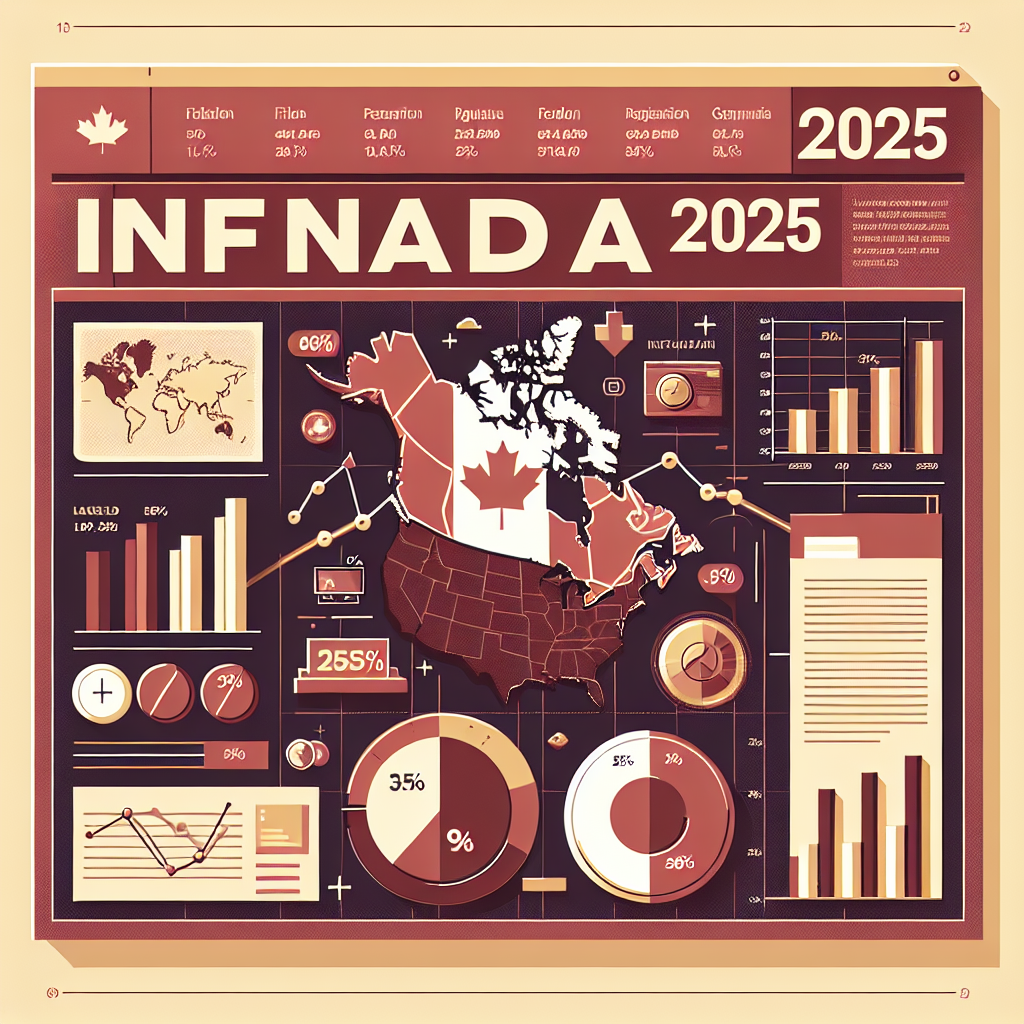Navigating the Changing Landscape of Inflation in Canada – 2025 Update
Introduction
As Canada’s economy adjusts to a complex set of challenges and opportunities, the inflation rate has seen substantial fluctuations. As of March 2025, the inflation rate stands at 2.3%, down from a peak of 2.6% in February. Trade tariffs and tax adjustments have played significant roles in shaping this economic environment. In this post, we’ll explore the factors influencing inflation, the forecasts for 2025, and what this means for consumers and investors alike.
Current Inflation Overview
In March 2025, Canada’s inflation rate fell to 2.3%, thanks in part to government tax breaks and adjustments in trade policies. This decline reflects a larger trend of inflationary pressures affecting consumer prices across various sectors. The Bank of Canada has projected that inflation will stabilize around 3% into next year but aims to return to the target rate of 2% by mid-2025.
Key Influencers of Inflation
-
Trade Tariffs: The recent implementation of tariffs by the U.S. has caused a ripple effect, driving up costs for imported goods and services in Canada. This inflationary pressure is felt across multiple sectors, which now anticipate increased prices given the ongoing geopolitical tensions.
-
Tax Policies: The adjustments in tax breaks are expected to ease the burden on consumers temporarily. By providing relief, these measures can help to alleviate immediate pressures leading to higher prices, ultimately contributing to an overall reduction in inflation for a segment of the market.
-
Economic Outlook: The uncertain economic forecast feeds into inflation dynamics. Business investments may falter due to this unpredictability, further complicating the overall consumer price landscape.
Looking Forward: Predictions for 2025
Various institutions, including the Bank of Canada and financial analysts, foresee the inflation rate settling around 2.4% towards the end of 2025. The expectation remains that inflation will experience minor fluctuations closely tied to both domestic policies and external economic pressures.
Conclusion
As investors and consumers navigate these uncertain waters, remaining informed about inflation trends is more crucial than ever. Understanding these dynamics can better equip stakeholders to make informed decisions regarding investments and purchasing strategies. Stay tuned as we continue to monitor these developments in the Canadian economy.
Social Media Updates
Update 1:
📉 Breaking News: As of March 2025, Canada’s inflation rate has decreased to 2.3%! Factors like trade tariffs and tax adjustments are at play. How will this affect your financial decisions? #CanadaInflation #Economy2025
Update 2:
💡 Inflation Insights: Did you know that inflation is projected to return to 2% by mid-2025? Understanding these trends can help you navigate your investments better! #FinancialLiteracy #CanadianEconomy
Update 3:
🌍 Impact of Trade Tariffs: The ongoing geopolitical trade tensions are raising costs in Canada. Let’s discuss how tariffs are influencing consumer prices and what to watch for in 2025! #TradeTalk #InflationWatch
Update 4:
🗺️ Regional Insights: Keep an eye on inflation differences across Canada! Understanding regional variations can enable smarter financial planning. #EconomicInsights #CanadaInflation2025
